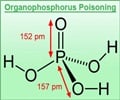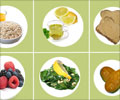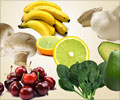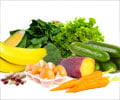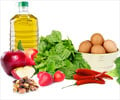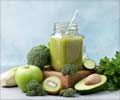An annual report by the Environmental Working Group found that nearly 70% of samples of 48 types of produce were contaminated with pesticide residues.
- Strawberries remained at the top of the list of produce with the highest concentration of pesticides.
- Spinach samples, had an average of twice as much pesticide residue by weight than any other crop.
- An average of 200,000 people across the world die from toxic exposure to pesticides every year and this can be reduced with less use of pesticides.
This year, strawberries remained at the top of the list of produce with the highest concentration of pesticides, while sweet corn and avocados were ranked as having the lowest concentration. Produce that tested positive for various pesticides and contained higher concentrations of pesticides than other produce is featured on the list, known as the "Dirty Dozen."
Strawberries remained at the top of the list with at least 20 pesticides, while spinach jumped into the second spot with twice as much pesticide residue by weight than any other crop.
Americans eat nearly 8 pounds of fresh strawberries per person each year, and even when they are rinsed in the field and washed before eating, they are still most likely to be contaminated with pesticide residue, according to the Environmental Working Group.
In addition to strawberries and spinach, this year’s list includes nectarines, apples, peaches, celery, grapes, pears, cherries, tomatoes, sweet bell peppers, and potatoes.
Some of the chemicals detected on strawberries are relatively benign, but others are linked to cancer, reproductive and developmental damage, hormone disruption, and neurological problems. Spinach samples, meanwhile, had an average of twice as much pesticide residue by weight than any other crop.
"Eating plenty of fruits and vegetables is essential no matter how they’re grown, but for the items with the heaviest pesticide loads, we urge shoppers to buy organic," Sonya Lunder, EWG senior analyst and lead author of the guide said in a statement. "If you can’t buy organic, the Shopper’s Guide will steer you to conventionally grown produce that is the lowest in pesticides."
What is the Solution?
The Shoppers Guide also includes "Clean Fifteen" -- a list of produce least likely to contain pesticide residues. This year’s Clean Fifteen included, in descending order, sweet corn, avocados, pineapples, cabbage, onions, frozen sweet peas, papayas, asparagus, mangoes, eggplant, honeydew melon, kiwis, cantaloupe, cauliflower and grapefruit.
Among these 15, avocados and sweet corn were the cleanest -- only 1 percent of samples showed any detectable pesticides, while more than 80 percent of pineapples, papayas, asparagus, onions and cabbage had no pesticide residues.
The report says that multiple pesticide residues are extremely rare on Clean Fifteen vegetables (only 5 percent of these vegetable samples had two or more pesticides) and no single fruit sample from the clean list tested positive for more than four types of pesticides.
Use Less/No Pesticides
Vegetables such as cauliflower, cabbage, garden cress, bok choy, broccoli, Brussels sprouts, and onions and garlic are naturally resistant to pests and therefore aren’t sprayed with as many pesticides.
EWG notes that an average of 200,000 people across the world die from toxic exposure to pesticides every year and blames "systematic denial, fueled by the pesticide and agro-industry" for "the magnitude of the damage inflicted by these chemicals." It also notes that we don’t need pesticides for all the vegetables and fruits that is grown.
Source-Medindia




